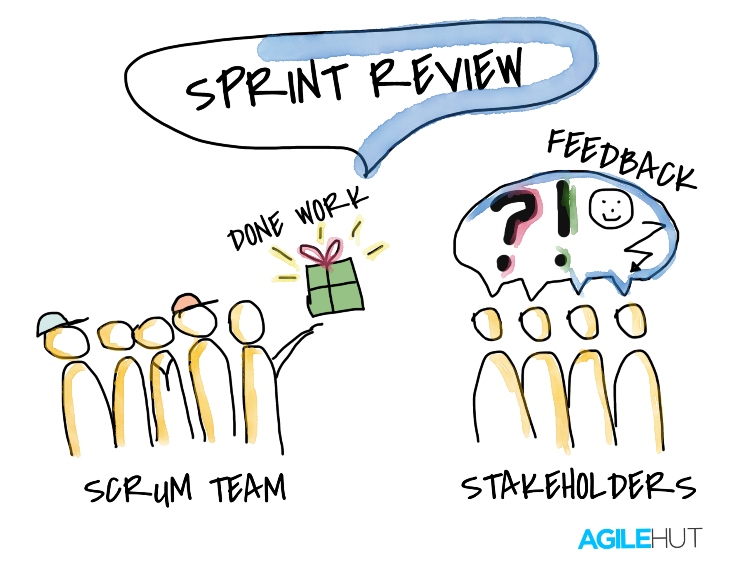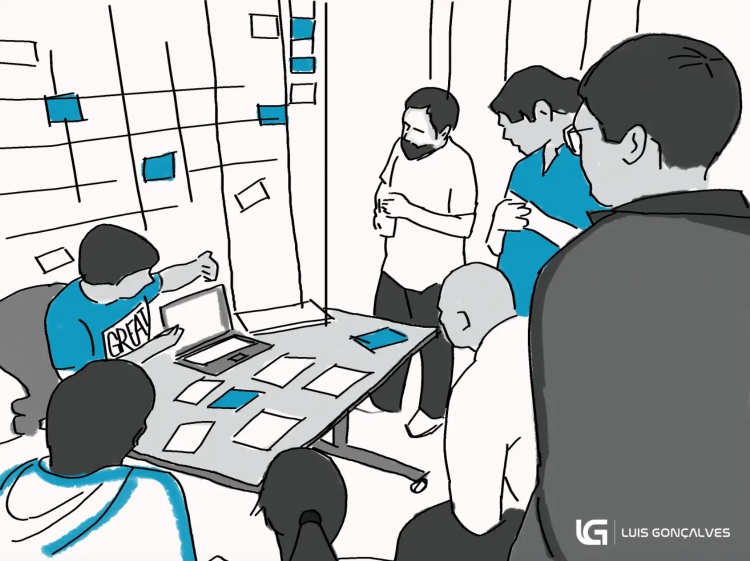According to the Scrum project management framework, each Sprint always includes four events: Sprint Planning, Daily Scrum, Sprint Review, and Sprint Retrospective. All four events play equally important roles in the success of a Sprint.
In the following content, let’s delve deeper into the third event: Sprint Review and how to organize an effective Sprint Review session!
What is Sprint Review?

Sprint Review is an event that takes place at the end of a Sprint to inspect and adapt the product being built. According to the Scrum Guide, this event consists of two main activities: product testing and discussing the product’s status, determining the next steps and adjustments if necessary.
In other words, Sprint Review is an opportunity for the Scrum Team and stakeholders to examine and update product information. Typically, the attendees invited to the Sprint Review session are determined by the Product Owner (PO).
- Misconception: Is Sprint Review just a product demo?
- Reality: The demo is only a part of the Sprint Review session. The main activities of Sprint Review involve evaluating the delivered product outcomes within the Sprint, collecting feedback, and addressing any lingering issues if present.
Participants
- Mandatory: Development Team, Scrum Master, PO.
- Optional: Customers and stakeholders.
Although customers are not necessarily required to attend the Sprint Review session, their presence helps the Scrum Team gather additional feedback for adaptive adjustments to the product. The more effective the collaboration between the Scrum Team and customers/stakeholders, the more optimized the product development process becomes.
Duration

For a one-month Sprint, the maximum duration of the Sprint Review event is 4 hours. Similarly, for a weekly Sprint, the duration of the Sprint Review session is 1 hour.
Duration Flow of a Sprint Review
- Review session Evaluate Sprint goals: The PO updates the status of the selected Sprint backlog items and assesses the completion status and level of achievement.
- Share about completed Sprint: According to the Scrum Guide, transparency is crucial. Therefore, the Development Team can openly present the work deployment process, challenges encountered, and approaches to resolving them.
- Product experience: The development team demos and introduces the features and increments of the newly completed product. Afterward, all participants in the meeting directly experience these features.
- Discussion and feedback: All members engage in discussions and provide feedback for the product. The PO and Development Team will receive and respond to questions, collect input from users and stakeholders.
- Update the Product Backlog: After reaching agreements on what needs to change or be adjusted, the Scrum Team will update the necessary items for the next Sprint.

Common issues encountered during a Sprint Review session
Issue 1: Not receiving feedback from customers and stakeholders
The main purpose of Sprint Review is to gather feedback, but there will likely be cases where customers and stakeholders do not participate or participate without providing feedback. In such situations, the Scrum Master needs to fulfill their role effectively by actively asking questions and encouraging participants to voice their opinions. Additionally, it is important to identify the reasons for not receiving feedback from customers.
For example: The development team is Vietnamese, while the Product Owner and customers are Japanese, creating a language barrier. The development team presents in Vietnamese, but the communicator (interpreter) fails to convey the full meaning, resulting in customers not fully understanding the product information.
→ This issue can be improved by having the communicator directly demo with the customers instead of just serving as an interpreter. With this approach, the communicator would need thorough training in the process and sequence of the demo beforehand.
Issue 2: Sprint Review turning into a session for praising or criticizing the team
It is not uncommon for stakeholders to use the review meeting as an opportunity to criticize or evaluate the team’s productivity. To prevent being reactive in such situations, the team needs to designate a facilitator, often the Scrum Master. The facilitator will guide the meeting according to the agenda, avoiding deviations into topics outside the scope of discussion.
How can a Sprint Review be conducted effectively?
Here are some practical experiences and tips shared by Agile expert Nguyen The Nghi (Agile Coach, Squad Leader at Agile Phuong Nam Academy):
- Have a designated facilitator to lead the meeting.
- Share different perspectives and viewpoints on the product openly, even if they involve disagreements.
- Do not present unfinished items from the Product Backlog as “completed.”
- The Product Owner should use acceptance testing techniques to assess the features.
Read related article: How to make the Sprint Retrospective in the right way
